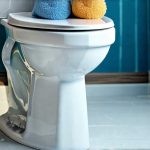Living with a sensitive bladder – often associated with conditions like Overactive Bladder (OAB), Interstitial Cystitis (IC), or simply heightened urgency – can significantly impact daily life. It’s more than just frequent trips to the restroom; it’s about managing anxiety, planning activities around potential emergencies, and navigating social situations with confidence. Many individuals find themselves constantly anticipating the next urge, leading to stress and a diminished quality of life. This article aims to explore how thoughtful ‘workday flow management’ – essentially strategic planning and adaptation – can help mitigate these challenges and empower those living with sensitive bladders to regain control and live more fully. It’s about creating routines and employing techniques that minimize triggers, maximize comfort, and reduce the mental burden associated with bladder sensitivity.
The concept isn’t about curing a condition; it’s about adapting to it. Workday flow management is proactive rather than reactive. It requires self-awareness – understanding your personal triggers and patterns – and then implementing strategies that acknowledge and accommodate those realities. This could involve anything from timing fluid intake, planning restroom breaks strategically, or even adjusting work tasks to minimize stress. The goal isn’t to eliminate the condition but to lessen its grip on your daily experiences, allowing for greater peace of mind and productivity. It’s a personalized approach, tailored to individual needs and lifestyles, recognizing that what works for one person may not necessarily work for another.
Understanding Your Personal Bladder Profile
The first step in effective workday flow management is gaining a detailed understanding of your bladder. This goes beyond just knowing you have frequent urges; it’s about identifying the specifics. What triggers your urgency? Are there particular foods or drinks that exacerbate symptoms? Does stress play a significant role? When are your symptoms most pronounced throughout the day? Keeping a detailed “bladder diary” for a week or two can be incredibly insightful. This diary should record:
- Time of fluid intake (type and amount)
- Urgency levels on a scale (e.g., 1-5, with 1 being no urge and 5 being severe urgency)
- Frequency of restroom visits
- Any associated symptoms (pain, discomfort, etc.)
- Activities performed and level of stress experienced
Analyzing this diary will reveal patterns and potential triggers that you can then address in your workflow planning. It’s important to be honest with yourself during this process; accurate information is key to building a truly effective strategy. Don’t just focus on the negative either – note what helps manage symptoms too, such as relaxation techniques or specific activities that seem to reduce urgency.
Furthermore, consider how your workday itself contributes to bladder sensitivity. Long periods of sitting without movement can sometimes exacerbate symptoms, as can stress from deadlines or challenging tasks. Identifying these workplace factors is crucial for developing targeted solutions. Remember that this isn’t about blaming yourself; it’s about understanding the interplay between your body and your environment so you can create a more comfortable and manageable workday experience. For those looking to further refine their diet, exploring low-acidity snack habits can be particularly helpful.
Strategic Planning & Routine Implementation
Once you have a solid understanding of your bladder profile, you can begin to implement strategic planning into your daily routine. This involves proactively adjusting both your work habits and your lifestyle to minimize triggers and maximize comfort. Fluid management is often the starting point. Rather than restricting fluids entirely (which isn’t healthy), focus on when and what you drink. Spread fluid intake evenly throughout the day, avoiding large quantities at once. Consider reducing or eliminating bladder irritants like caffeine, alcohol, carbonated beverages, and acidic foods.
Beyond fluids, think about scheduling regular restroom breaks – even if you don’t feel an immediate urge. This can prevent a build-up of pressure and reduce anxiety. If your workplace allows it, consider taking short walking breaks throughout the day; movement can sometimes help alleviate symptoms. Finally, prioritize stress management techniques such as deep breathing exercises, mindfulness, or yoga to minimize the impact of stress on bladder function. Consistent routine is key: the more predictable your schedule, the easier it will be to manage your condition effectively. Consider incorporating daily gentle motion habits into this routine.
Managing Workplace Dynamics
Navigating workplace dynamics with a sensitive bladder can present unique challenges. It’s important to consider how comfortable you are discussing your condition with colleagues or supervisors. While sharing information may lead to greater understanding and support, it’s also perfectly acceptable to maintain privacy. If you require accommodations – such as easy access to restrooms or flexible work arrangements – discuss this with your HR department or supervisor in a professional manner. Focus on the impact of your condition on your work rather than dwelling on the medical details.
- Frame requests for accommodation as solutions that will enhance your productivity and performance, not limitations imposed by your condition.
- Be prepared to explain how specific accommodations will benefit both you and the company.
- Document any conversations or agreements made regarding accommodations.
It’s also important to establish boundaries. Don’t feel obligated to apologize for needing to take restroom breaks; it’s a normal bodily function, and managing your condition is a priority. Consider preemptively addressing potential concerns with colleagues – for example, letting them know you may occasionally need to step away briefly during meetings. Planning ahead with smart scheduling tips can ease these conversations.
Utilizing Technology & Apps
Technology can be a powerful ally in workday flow management for sensitive bladders. Numerous apps are available to track fluid intake, monitor urgency levels, and even remind you to take restroom breaks. These tools can help you stay organized and gain further insights into your patterns. Beyond bladder-specific apps, general productivity apps can also be useful for scheduling tasks and managing time effectively.
Consider using calendar reminders to prompt regular hydration or restroom visits. Smartwatches and fitness trackers can provide gentle nudges to move throughout the day, promoting circulation and potentially alleviating symptoms. There are even apps designed to guide you through mindfulness exercises or deep breathing techniques, providing on-the-go stress management tools. Don’t underestimate the power of technology to simplify your routine and empower you to take control. Taking steps for hydration management during exercise is also important.
Building Resilience & Self-Compassion
Living with a sensitive bladder can be emotionally draining. It’s easy to feel frustrated, anxious, or even isolated. Remember that it’s okay to have bad days – setbacks are inevitable. The key is to cultivate resilience and self-compassion. Avoid dwelling on accidents or challenging situations; instead, focus on learning from them and adjusting your strategy accordingly.
- Practice self-care: prioritize activities that bring you joy and help you relax.
- Seek support from friends, family, or a support group. Sharing your experiences with others who understand can be incredibly validating.
- Be kind to yourself: recognize that managing a sensitive bladder is an ongoing process, and it’s okay to ask for help when needed.
Ultimately, workday flow management isn’t just about practical strategies; it’s about reclaiming control and living life on your own terms. It’s about acknowledging the challenges, adapting proactively, and prioritizing your well-being – both physical and emotional. Further support can be found by understanding flow reset techniques for various conditions.
To promote overall wellbeing, consider integrating daily self-care anchors into your routine, and remember that even small adjustments can make a significant difference in managing bladder sensitivity.





















